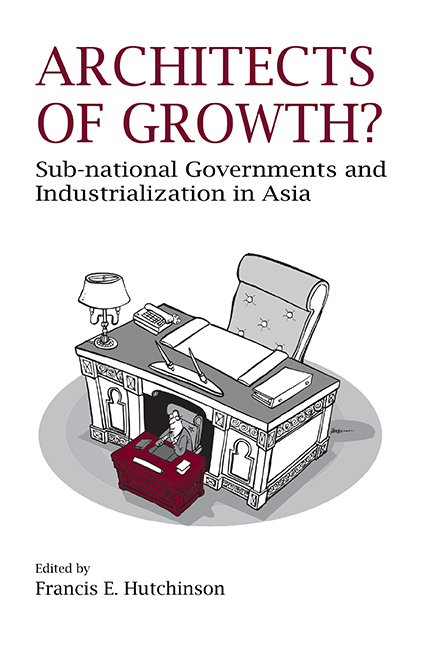Book contents
- Frontmatter
- Contents
- List of Tables
- List of Figures
- Foreword
- Preface and Acknowledgements
- Contributors
- Abbreviations
- I Introduction and Industry Overview
- II Cases from Industrializing Southeast Asia
- III Cases from China and India
- IV Cases from Industrialized Countries
- 9 The Development of Singapore's Electronics Sector
- 10 The Evolution of an Industrial Cluster and Its Policy Framework: The Case of Gumi City, Korea
- 11 The Case of the Electronics Sector in Kaohsiung Municipality, Taiwan
- 12 Sub-national Policy and Industrial Transformation in Conclusions
- V Conclusion
- Index
10 - The Evolution of an Industrial Cluster and Its Policy Framework: The Case of Gumi City, Korea
from IV - Cases from Industrialized Countries
Published online by Cambridge University Press: 21 October 2015
- Frontmatter
- Contents
- List of Tables
- List of Figures
- Foreword
- Preface and Acknowledgements
- Contributors
- Abbreviations
- I Introduction and Industry Overview
- II Cases from Industrializing Southeast Asia
- III Cases from China and India
- IV Cases from Industrialized Countries
- 9 The Development of Singapore's Electronics Sector
- 10 The Evolution of an Industrial Cluster and Its Policy Framework: The Case of Gumi City, Korea
- 11 The Case of the Electronics Sector in Kaohsiung Municipality, Taiwan
- 12 Sub-national Policy and Industrial Transformation in Conclusions
- V Conclusion
- Index
Summary
Introduction
Korea has achieved remarkable economic growth over the past five decades. After the devastation of the Korean War (1950–53), the country was among the poorest in the world. From a GNP per capita below US$100 in 1960 (in 1996 USD), the country's GNP reached US$20,000 in 2007. Such a remarkable level of economic growth is closely tied to the successful implementation of the government's strategies for export-oriented and sectorspecific industrial development, human resources, and innovation since the launch of the First Five-Year Economic Development Plan in 1962.
Because of the development of industrial clusters, dynamic spatial patterns and processes have occurred in Korea's “space economy”. In the country's early industrialization phase, the spatial disparity of economic activities increased with the bipolar concentration of industries. This spatial disparity has been persistent, accompanied by the continuous concentration of population, which has created a new spatial division of labour between the Capital Region and the rest of the country as well as path-dependent trends of industrial development.
However, a conscious state-led strategy of supporting industrial clusters in the non-Capital Region has mitigated this somewhat. Despite the persistent spatial disparity of economic activities, the intra-regional disparity of per capita GRP has been considerably decreased over the last two decades. Along with the decrease of the spatial disparity of per capita GRP, a new path creation trend is evolving in cities of provincial areas and rural areas. The development of high tech industries such as electronics in the non-Capital Region and the development of ICT have influenced the spatial dynamics of the Korean economy (Park 2009).
Gumi city in Gyungsangbuk province is a good example of economic development in the non-Capital Region that has contributed to lowering intra-regional disparities as well as the progress of the dynamics of Korea's economic space. Over the last four decades, Gumi city has emerged as a leading electronics cluster and, in 2011, the city's export value reached US$33 billion. Gumi's industrial structure has been transformed, evolving away from the branch plant agglomeration characterised by the co-location of many branch plants in the electronics sector to an industrial cluster with evolving local networks.
This chapter will analyse the case of Gumi city. This chapter will first put forward national industrial and regional policies.
- Type
- Chapter
- Information
- Architects of Growth?Sub-national Governments and Industrialization in Asia, pp. 279 - 304Publisher: ISEAS–Yusof Ishak InstitutePrint publication year: 2013

